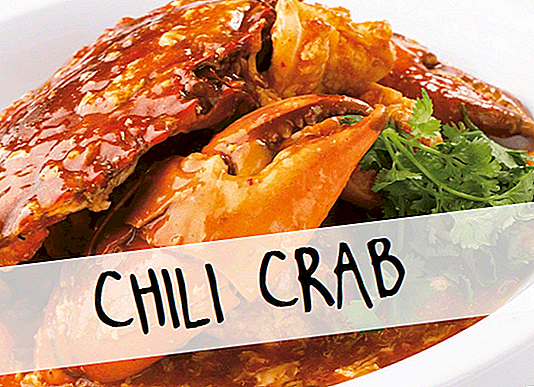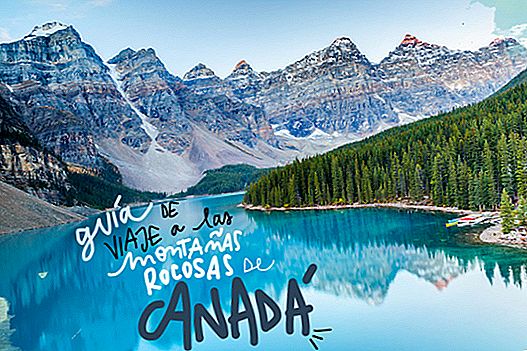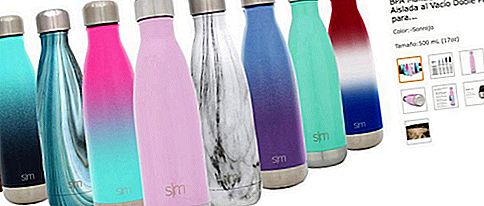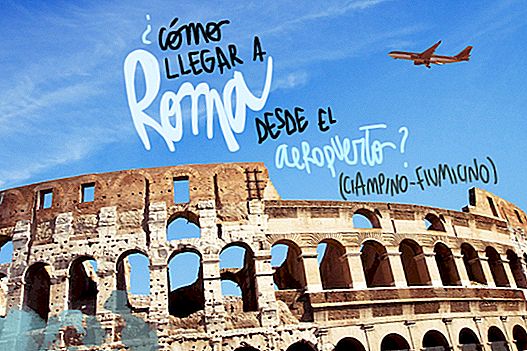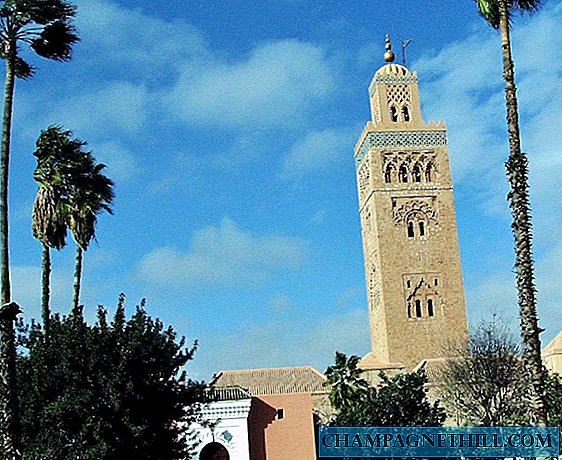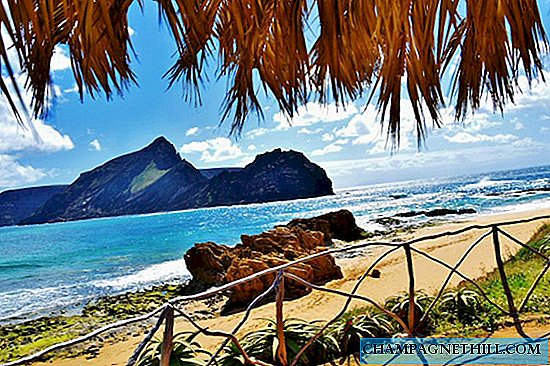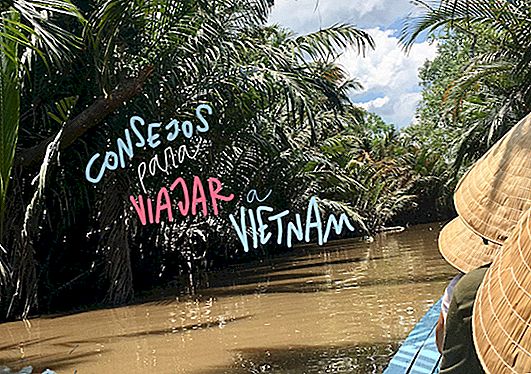
Vietnam is one of the most fascinating countries in all of Southeast Asia. In fact it is almost always included in the travel plans of those who visit Asia for several weeks, something will have! Now, there are many doubts when organizing a trip. What is the best time to travel to Vietnam? Do I need a visa? How do I move? What do I have to eat? Next we will try to solve your questions and we will give you a few tips for traveling to Vietnam (and not screw it up).
The truth is that our first meeting with Vietnam was NOT the best: when we arrived, after a strenuous bus ride, we forgot a backpack under the seat of a taxi and we lost 2 cameras, 2 mp3, among other things ... And then no He improved: a few days later, Lety got an allergy attack, they stole a motorcycle from us, we had a cold cold in the north and Rober had a milk flu. Come on, we left without wanting to come back ...
... Until we came back ... And the experience was much better. We found the people friendlier, the sweetest coffee, the most impressive Halong Bay and finally we changed our vision. Although one thing is clear: Vietnam is objectively one of the best destinations in Asia.
Now, let's go with the tips to travel to Vietnam:
It depends on your nationality, to Spanish people it is not necessary to process a visa before arrival for travel of up to 15 days and of a single entrance. You just have to go to the passport controls and that's it! This visa exemption applies to some European countries, such as the United Kingdom, France, Italy, Spain or Germany and the only country in America is Chile (with a stay of up to 90 days!). Here we leave you a map with the visa conditions for Vietnam depending on your nationality:
www.wikipedia.org
If you plan to be up to 30 days, with only one entry, or because of your nationality you cannot enter without a visa, you will have to request a “E-visa“, Or electronic visa, from the official website of Immigration of Vietnam. The price is 25USD that will be paid online in the application. It takes 3 to 5 days and you will have to carry the approval letter printed with you. It is worth to enter airports, as other border crossings, here is the complete list.
For stays between 30 days and 90 days or with several tickets, it will be necessary to process a tourist visa at a Vietnam embassy / consulate abroad before traveling. Or opt for the “visa on arrival“, For which you will need to bring an invitation letter that you have to request at an unofficial agency, like this one. The procedure has a fee of about 20-40USD, plus the price of the stamp on arrival. In this case, it will only be valid for tickets through an airport, and once there, you will have to stop by the “visa on arrival” counters, show the invitation letter and pay the stamp, whose price changes depending on the visa (you can pay in USD or € and the amount is the same):
- 1 month, several tickets: 50USD / €
- 3 months, only ticket: 25USD / €
- 3 months, several tickets: 50USD / €
To consider:
- With the visa waiver for trips up to 15 days, you will not be able to re-enter Vietnam without a visa until after 30 days.
- The visa on arrival is only valid for airport tickets. If you enter through a land border you will have to have obtained an E-visa / tourist visa in advance.
If you are finally going to be 15 days in the country and want to know what is the best itinerary to travel to Vietnam, we recommend you follow this:
- Arrive to Hanoi (6 days calculating the visit to Sapa 2 days and at Halong Bay of another 2 days).
- Bus to Ninh Binh (2 days)
- Bus / night train or flight (through Da Nang airport) to Hue Y Hoi an (3-4 days).
- Flight to Ho chi minh (3-4 days, with visits to the Mekong Delta and the Cu Chi Tunnels).
If your idea is to spend more time, we recommend extending the days in the north, where the landscapes are more spectacular, for example staying in Cat ba to enjoy Halong Bay more calmly. And then finish the trip on the island of Phu Quoc that, although it is not one of the most spectacular in Asia, a little bath never hurts.
But keep in mind that Vietnam is not a beach destination. Yes, it has a lot of coastline and a few places with interesting beaches (such as An Bang in Hoi An or the already mentioned island of Phu Quoc) but being in Asia there are many better places!
→ In this post you have a 2-week travel itinerary to Vietnam, with all the details.
→ If you want to know what not to miss on your trip, here we tell you the best 10 things to do Vietnam.
It is not so easy to answer this question since the weather varies a lot from one area to another ... Let's say that the country could be divided into 3 parts: north (Hanoi, Sapa, Halong, etc ...), center (Hue, Hoi An, etc ...) and south (Ho Chi Minh, Mekong Delta, etc ...). While the south has a tropical climate during almost the whole year, the center and especially the north, in winter (December-March) are quite cold.
Taking this into account (and putting in a backpack a coat and several sweatshirts) in general we believe that the best time to travel to Vietnam is the months of November, December, January, February and March. The months of May, to October are hotter and are affected by typhoons.
The rice paddies in northern Vietnam they usually plant after spring, so in the summer months they will be full. In winter they appear with a slightly more soulless image, with terraces full of water but without any green, although the landscape is still peculiar.
Finally, unless you are not very interested in living the chinese new year in Vietnam, avoid traveling on those dates (end of January / ppios February) since from your own experience it is chaos! The country is almost completely paralyzed (not to mention the prices that rise a lot).
Vietnam is a very long country, so transfers between different destinations may take a long time. So it is recommended to alternate buses, trains and internal flights (depending on the budget and route you want to do).
BUSES
A fairly common option is to take the so-called “Open bus”, A ticket that costs about $ 40/50 and includes bus tours between several cities in Vietnam (usually Ho Chi Minh, Mui Ne, Da Nang, Hoi Han, Hue and Hanoi). Here you have prices and more info.
TRAINS
Trains cover virtually the entire country from north to south, from Lao Cai to Ho Chi Minh City. There are several types of classes, both seats and bunk beds, and are usually quite comfortable. We recommend booking with some day in advance on the most popular routes, either at the ticket office of the station itself, at a local agency or with websites such as 12go.asia, also valid for buses.
The most famous travel agency in Vietnam to hire transportation or tours is The Sinh Tourist.
Truquitoto save time and money: travel with night buses / trains: You can sleep and in passing you save a hotel night. Although obviously, unless you are not a panda that sleeps without problems everywhere, it is not the maximum comfort (especially buses ...). Wear some warm clothes because you can suffer a severe freeze: S
FLIGHTS
Domestic flights are extremely cheap, if you book with a week in advance you can leave for about € 10-20! There are two companies that operate many routes: Vietjet and Jetstar, although as always, it is best to compare prices on the Skyscanner website. We recommend them for long journeys, in which the train or the bus can take many hours.
TRANSPORTATION IN THE CITIES
To move within the cities the app works very well Grab (the Uber of Asia). They are safe, cheap and you avoid discussions with taxi drivers, who will often try to deceive you. There is another app that Vietnamese use is called be Very similar to Grab, but with much cheaper prices. Keep in mind that in order to use it you need a Vietnamese number.
MOTORCYCLE RENTAL
There are areas where renting a motorcycle is a success, as in Tam Coc (in Ninh Binh), Phu Quoc, Hoi An or Mui Ne. But be careful, because we were robbed in Mui Ne and it was one of the worst moments we lived on a trip. Then we discover that in the area it is very common: often the same ones that rent it to you follow you and as soon as you park it and take it out, they go with a second key and pouf! motorcycle that flies. Then they demand money for the loss, and it is a matter of negotiation. How to avoid it? Carrying your own lock / clip and try not to leave your passport when you rent it (if they require a document, give them your ID, if you lose it, it is not so serious)
On the issue violence, There is no problem. Beyond that, as in any place, you can suffer the bad arts of a pickpocket or the deceptions of a bad taxi driver, you will not have problems if you use common sense (and a little touch, that the Vietnamese spend very bad milk) .
Special attention, however, with two things: theme accidents, especially if you rent a motorcycle, and theme diseases. In Vietnam there is a risk of getting dengue, so take all possible precautions to avoid mosquito bites: Bring mosquito repellent (with a concentration of DEET greater than 30%), cover your body especially in the most chungas hours (at sunrise and sunset) and avoid swampy areas.
Even if There is not mandatory vaccines to travel to Vietnam, but as in other parts of Asia, those of Hepatitis A and B, typhoid fever, rabies and tetanus are recommended. You can see the health tips for a trip to Vietnam here.
Nor is the travel insurance but DON'T play it. That itself is an expense that we never recommend taking away: insurance can save you thousands of €, so don't even travel without it. We are insured with Iati and the times we have used it were 10. Here you have a 5% discount.
Vietnam has a border with Laos and Cambodia, and throughout its territory there are several border crossings through which to move from one country to another. If you are making a trip through Southeast Asia and you intend to travel by land between Laos, Cambodia and Vietnam, the most famous border crossings are these:
- Tay Trang, to the north with Laos
- Na meo, north Laos
- Bavet, south with Cambodia
- Ha Tien, south with Cambodia
The crossings with Cambodia, the border agents they are usually quite corrupt and they ask you for a dollar than another simply for planting the seal. We refused and we spent about 30 minutes without giving in, the rest of the group had spent paying and in the end we made a 2X1 ... But they have a nose ...
In addition, if you do not have a visa, the agencies with which you hire the transport almost oblige you to be the ones that manage the visa on arrival, demanding a payment, of course. That you know that YES you can do all the procedures yourself at the border. Also, if you enter Bavet to Cambodia, you can request the eVisa from Cambodia (for Laos at the moment the eVisa is not valid for tickets by land).
The currency used in Vietnam is the dong (VND), with a raruno raruno exchange rate (€ 1 is like 25,000 dongs!). To get money and to make payments where they accept card, we recommend carry two cards: the Bnext card as the first option, and the N26 card for possible emergencies. Both are free cards with excellent conditions to save us good money in commissions, but with certain limitations, so they complement each other perfectly. In addition, in Bnext there is a € 5 welcome promo! There are other travel card options that we talk about here.
If you choose not to request any of these cards, it is best to exchange money in banks or exchange houses in the city (or in jewelers) and avoid those at airports. The last option is usually to get money with your bank card, because it is normal to apply very high commissions.
It is another of the tips for traveling to Vietnam, and we see it very interesting on each trip. In Vietnam, at airports, they offer a few, but they are usually expensively priced packages. Theirs is to buy it in a specialized store when you are in the center of Hanoi or Ho Chi Minh (depending on where you arrive). The most famous companies are Viettel, Mobifone Y Vinaphone. Of them the best best best (especially by topic coverage) is Viettel. As a reference, a SIM for tourists at the airport, for 30 days, is around € 10-15 (if you buy the SIM with data pack in 2-3GB plan, in store, it will cost you about € 5-6).
The easiest option is to get a Holafly SIM, but keep in mind that it comes out a little more expensive than the stores you can buy there. If it convinces you, here is a discount 😉
It should be an essential stop on a trip to Vietnam but it is also the cause of many headaches. Long ago scams and deceptions were the order of the day, luckily today things have improved a lot and, unless you have very bad luck or you have not previously informed yourself, you should not have problems. Look at this post with our experience and tips for a cruise to Halong Bay.
But to give you an idea, you will have two options:
- Package 2 days and 1 night (there is also 3D2N) from Hanoi All inclusive: cruise, transportation, meals, activities… Price between € 100 and € 250 per person on 3 and 4 star cruises. We did this.
- For free based on Cat Ba. The place is very beautiful and there are multiple options: from boat trips during the day to cruises to spend the night at sea. The prices are lower.
To make a trek through the rice fields of Sapa you can choose between join a guided tour O well ride it for free. There are many agencies, both online and in the town of Sapa, that organize these trekkings, and are recommended for multi-day tours. In these packages, you walk during the first day (about 10-15 km) to a village, where you spend the night in a local house. The next day you continue walking another section and return to Sapa, usually by transport.
If you only want to spend a day, you do not need to go in a guided group, but they also offer this option. For do it for free, there are lots of routes on the web / app ofWikiloc. The most common, and the one that I did, was the one that reaches Ta van (about 10km), from where you can exit to the main road and wait to stop a van to climb back to Sapa. There is another circular, more touristy and shorter, that reaches the village of Cat cat.
On the other hand, Sapa is a quite tourist destination, and has lost a bit of the authenticity that it should have had a while back. If you prefer more remote places (although more difficult to reach), there are some alternatives to see the rice paddies in northern Vietnam. Write down these: Bac Ha, Mu Cang Chai or Ha giang.
Unlike in other countries in Asia, it was very difficult for us to haggle the prices of accommodation there. We also saw no special difference in prices between booking online or directly at the accommodation itself. So our recommendation is to search, compare, and book accommodations online.
In this case, prices usually go better with the Agoda website than with the Booking website.
Vietnamese cuisine is one of the great jewels of the country: dare with street food (usually fresh and cheap) and with typical dishes such as bun cha or pho bo, of course, accompanied by a cool and cheap bia hoi ( draft beer). In this post we tell you everything you have to eat in Vietnam.
In addition to the motorcycle, there are some tricks that Vietnamese use to get a salary envelope, for example:
- Name of the premises: often the surrounding businesses copy the name of the original premises, thus, without shame or shame. Spend a lot with agencies, hotels and restaurants. Famous was the case of the Sinh Café company (now The Sinh Tourist) that had to change its name because everything wanted, seeing the good reputation they had, had copied them.
- Weighing machine trick to calculate the weight of a wash.
- They return bad change, so check it always!
- Photos with Street sellers, they will ask you for money.
- Leave the passport at the hotel, and then extort money with extra room expenses. Never leave your passport when checking in at the accommodation!
- They steal in the rooms. It does not have to be generalized, but in Vietnam it usually happens that they take out some billetitos that you have kept in the room (not all) and you do not realize until you miss them later, if you realize. Do not leave money at the hotel or leave it locked.
- Exaggerated prices. Before ordering food, hiring a transport, always ask for the price.
- Tricked Taximeters. Cases have apparently skyrocketed, so it's always better to use Grab than play a trickster taxi.
- Not include services paid. Whenever you hire a tour, make sure you get everything agreed in writing.
- Halong Bay Cruise. There are many people who have had bad experiences with these cruises, that if cockroaches, rats, dirt ... Fortunately they are becoming more regulated, however it is worth spending a little more money but hire something safe. We tell you more here.
- The vietnamese character It is much rougher, sharper and harder than that of its neighbors. Besides, the religion It is not something fundamental in their lives (remember that you are in a communist country), so that is not a factor that sweetens them either. Keep that in mind when dealing with them.
- Learn some little words in the local language it is something we should always do… so at least learn to say hello (xin chao) and thanks (cam on). And if you encourage yourself to learn more phrases, much better ... surely the Vietnamese will thank you!
- Find out about the Vietnam War: It was the hardest and bloodiest chapter in the history of the country and you will not be able to fully understand the trip, without having studied this tragic chapter (it is not enough to have seen a couple of Hollywood movies).
- Put a lot attention when crossing the road: there is thousands of motorcycles They will come out of nowhere. Just do not obsess, your thing is to cross slowly but without changing course ... the same motorcycles will be the ones that avoid you. Our trick is to put ourselves next to a local and sneakily cross over with it as an XD shield. It doesn't fail!
- Do not leave your passport to anyone. If you are asked at the hotel, it is best to say that you do not have it, that you left it at the embassy to process the visa or invent a milonga. In return, if they insist, deliver a photocopy of the passport you carry in advance. Why do they ask for a passport? As a guarantee: if something is not going well, they will be able to "threaten" you by not giving it back.
- If flights from Spain to Vietnam are very expensive, look for a flight to Bangkok: the trips to the Thai capital are usually at a very good price and since you are, spend a couple of days there. We pay a Bangkok-Hanoi € 30 ticket with AirAsia.
- Look at all the Foreign Ministry recommendations from Spain here.
Up to this point our tips for traveling to Vietnam (and not screw it up). We hope we have clarified the doubts and be helpful. If you have questions or want info about topics we don't discuss, leave us a comment and we'll answer you as soon as possible.

Save on your trip
Get cheap flights to Vietnam: bit.ly/37alh1W
Find accommodation Cheap in Vietnam: bit.ly/33PSptK
Stay withAirbnb and get€ 25 discount: here
Activities and excursions in Vietnam: bit.ly/2QnG2RJ
Rent a car with the best discounts: bit.ly/2xGxOrc
Travel insurance IATI with a5% discount: bit.ly/29OSvKt
Books and travel guides: amzn.to/2qkwcoV
All our articles about Vietnam

